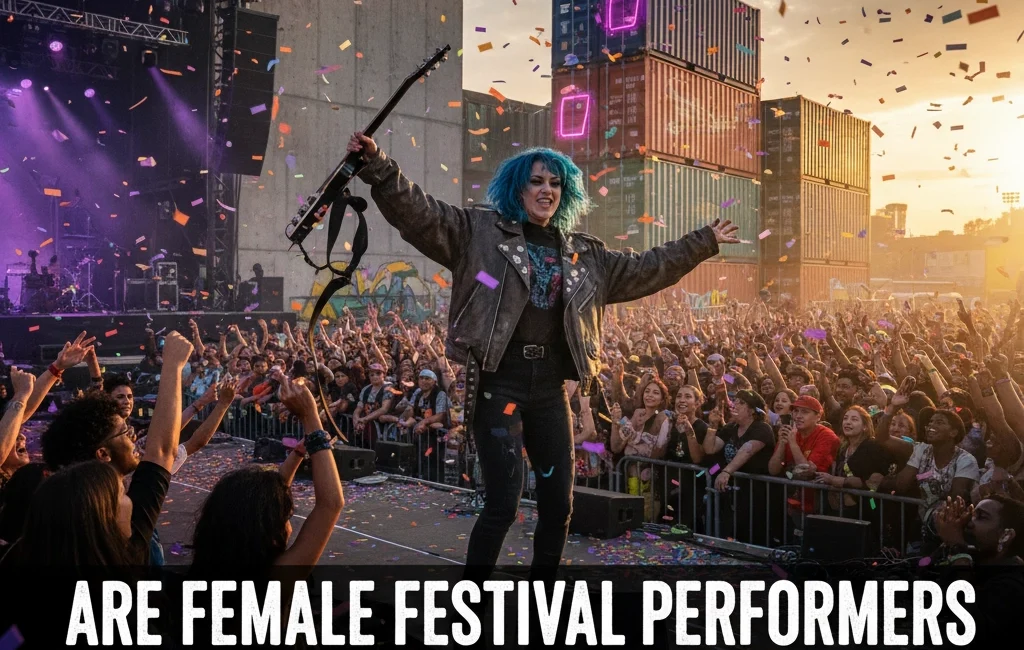Let me keep it real with you – stepping onto a festival stage as a female performer still feels like walking into someone else's house party. You know the feeling, right? That moment when you realize you're one of maybe three women on a lineup of twenty acts, and suddenly every move you make feels magnified under a microscope.
But here's the thing that gets me fired up: we're not just surviving in these spaces anymore, we're transforming them. And while the numbers might still make you want to throw your mic stand across the stage, there's genuine momentum building that I can feel every time I perform.
The Reality Check We Need to Talk About
I wish I could tell you we've cracked the code, but the data doesn't lie. Female acts still only make up about 29.8% of festival performers compared to 58.4% male acts. When I see those numbers, I think about every time I've been the only woman in a backstage area, or when sound engineers automatically assume I'm someone's girlfriend rather than the artist.
Here's what really gets under my skin though – all-male acts dominated 60% of festival lineups in 2023. Sixty percent! That means when festival organizers are making their booking decisions, they're still defaulting to male-centric programming. It's like they're stuck in some time warp where diversity means adding one female headliner and calling it progressive.
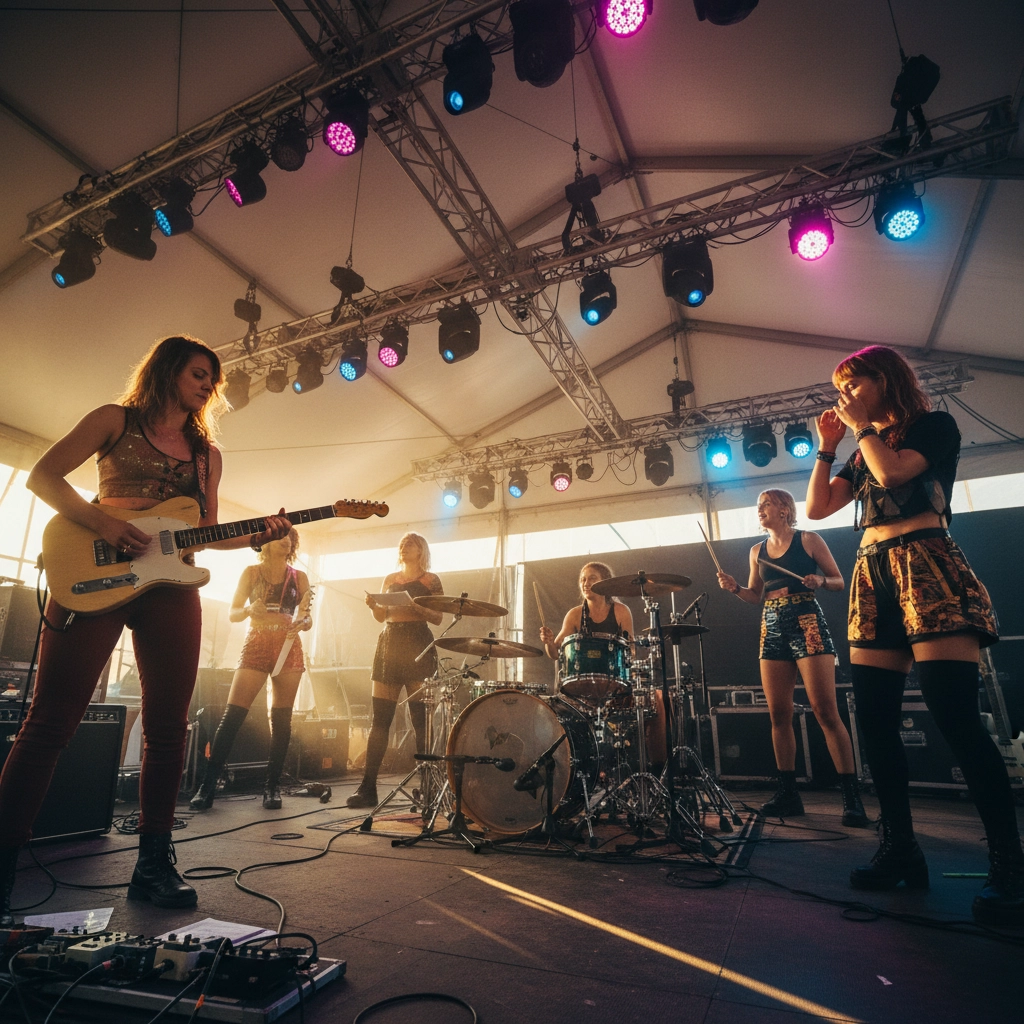
But here's where it gets interesting – festivals with public funding show 34.6% female representation compared to just 28% at privately funded events. This tells me that accountability works. When there are actual standards and oversight, suddenly there's room for more of us on those stages.
Breaking Down the Boys' Club Mentality
I've performed at festivals where the backstage rider conversation goes something like this: "Oh, you'll need different catering requirements, right?" Like somehow being female means I survive on salads and sparkling water instead of the same pizza and energy drinks everyone else needs.
The microaggressions are real, and they're exhausting. From sound engineers who speak to my male bandmates instead of directly to me, to photographers who focus their lenses on everything except my actual performance. It's death by a thousand tiny assumptions.
But here's what I've learned from navigating these spaces for years – your presence is your power. Every time you step onto that stage, you're not just performing for the crowd; you're reshaping what festivals look and feel like.
5 Ways to Command Your Space on Stage
1. Own Your Sound Check Like Your Career Depends on It
This isn't just about levels and monitors – it's about establishing your authority from minute one. I walk up to that sound engineer, shake their hand, and introduce myself as the artist. Not the singer, not the girl with the band – the artist.
I've learned to speak their language: "I need the vocal sitting just above the kick drum in my monitor, and can we roll off some of the low end on the guitar?" Technical confidence translates to respect, and respect translates to better sound quality for your performance.
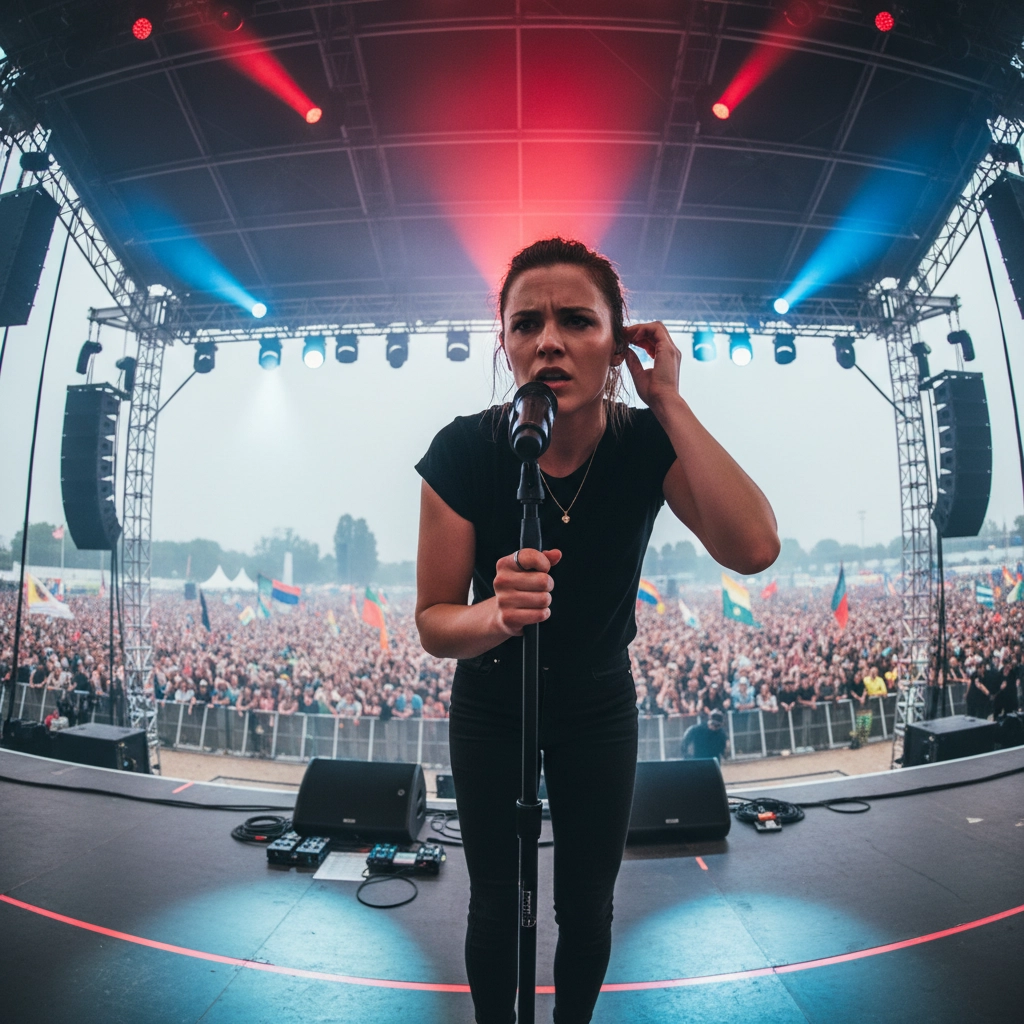
2. Master the Art of Strategic Eye Contact
Female performers often get caught in this trap of either being too aggressive or too passive on stage. I've found the sweet spot is intentional, purposeful eye contact that connects rather than confronts.
When I scan the crowd, I'm not just looking at faces – I'm creating individual moments of connection that multiply across the entire festival field. Pick someone in the front row, hold their gaze for a full phrase of lyrics, then move to someone in the middle, then the back. You're not performing at them; you're performing with them.
3. Use Your Voice as an Instrument of Command
Here's something I wish someone had told me earlier: your speaking voice between songs is just as important as your singing voice. I used to rush through banter or apologize for taking up space. Now? I pause, breathe, and speak with intention.
"This next song is about…" becomes "Stop everything you're doing and listen to this story." Your voice should fill every corner of that festival site, whether you're whispering or belting. Command attention through dynamics, not just volume.
4. Strategic Movement That Claims Your Territory
I've watched male performers spread across every inch of stage real estate like they own it, while female performers often stay planted behind their mic stand. Movement is claiming space, and claiming space is making a statement.
I map out my stage during soundcheck – where are the sweet spots for crowd connection? Where does my voice project best? Where can I create those powerful silhouette moments against the festival lights? Then I use every square foot during my performance. Your stage presence should be expansive, not contained.
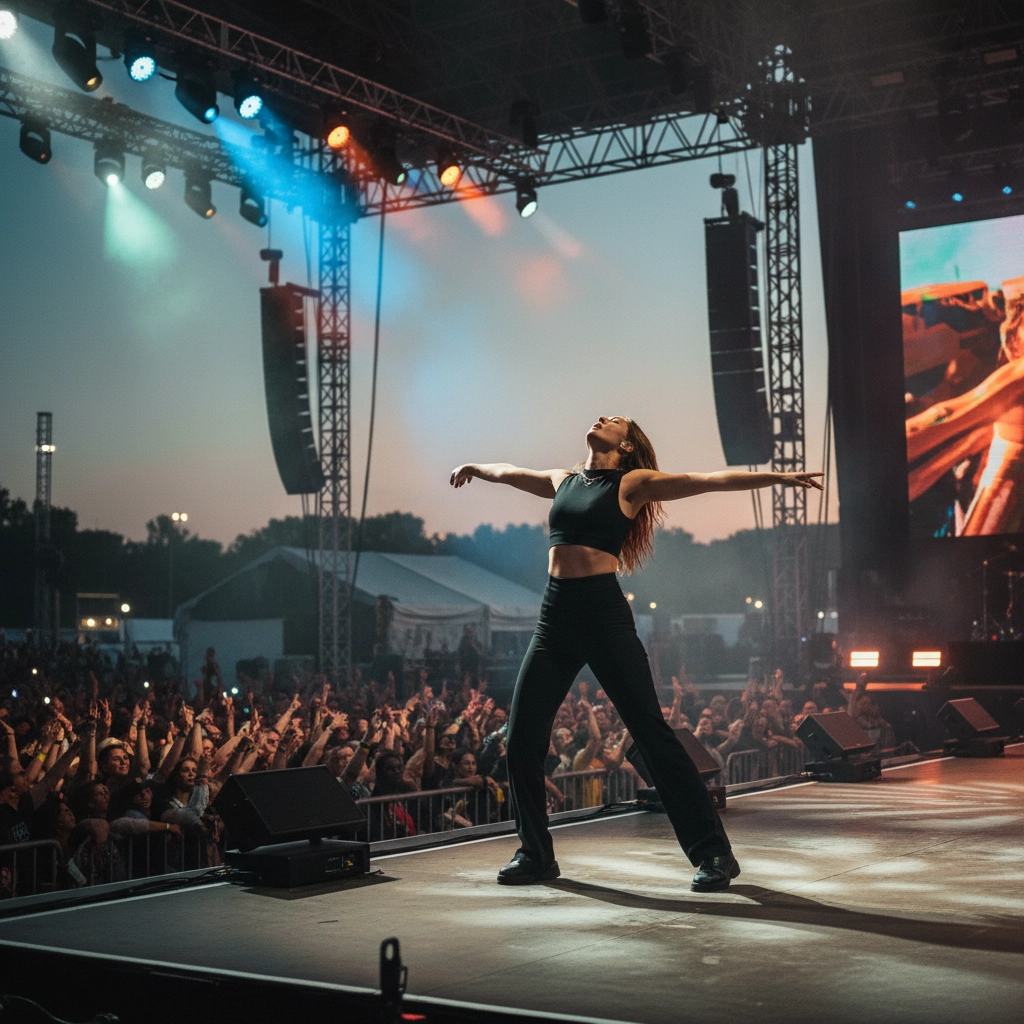
5. Build Your Festival Community Before You Need It
This one's crucial – you can't command respect in isolation. I make it a point to connect with other performers, especially other women, at every festival. We share contacts, recommend each other for future shows, and create our own support network within the larger festival ecosystem.
When you're part of a community, you're not the "token female act" anymore – you're part of a movement. And movements have power in ways that individuals don't.
The Festivals That Are Getting It Right
I've got to shout out the festivals that are actually putting their money where their mouth is. There are women-centered festivals popping up that aren't just adding female acts to existing formats – they're reimagining what festivals can be entirely. Better safety protocols, harassment prevention that actually works, and hiring practices that put women in leadership roles behind the scenes.
These aren't "women's festivals" – they're festivals that understand that diverse lineups create better experiences for everyone. When I perform at these events, the energy is different. The crowd is different. The entire vibe shifts when women aren't performing despite the space, but because the space was created with us in mind.
The Work Isn't Done Yet
Look, I'm not going to blow sunshine and tell you everything's fixed. Anna-Sophie Mertens said it best when accepting her Live Music Inspiration award recently – we've made progress, but "we still have a really long way to go." Especially for working mothers in this industry who are juggling creative careers with family responsibilities.
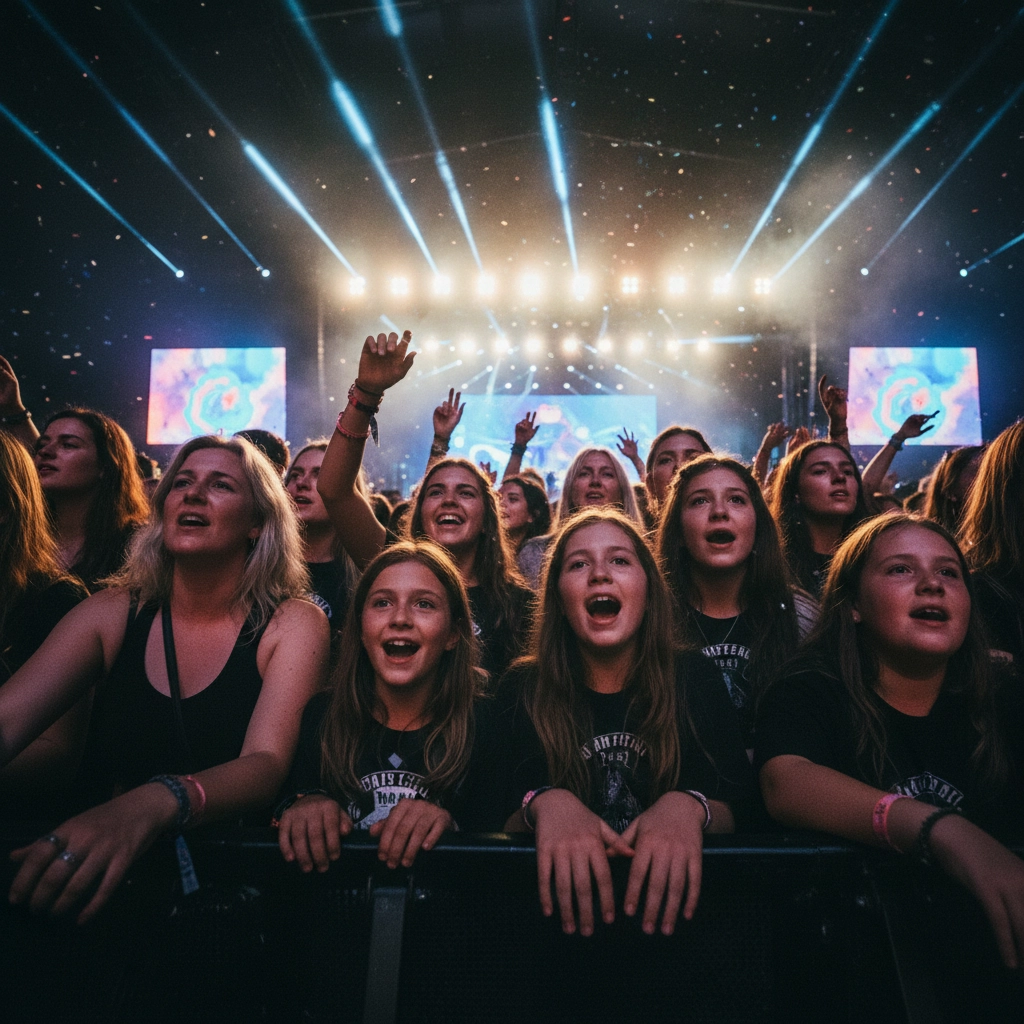
But here's what keeps me energized: every time I step on a festival stage, I'm not just representing myself. I'm representing every young girl in that crowd who's thinking "maybe I could do that too." I'm representing every female artist who came before me and fought for space at these events. And I'm creating space for the ones who are coming after me.
Your Stage Awaits
The festival circuit is still figuring out how to make room for all of us, but we don't have to wait for permission to take up space. Every performance is an opportunity to redefine what female festival performers look and sound like.
Whether you're just starting out or you've been grinding in this industry for years, remember that your presence matters. Your voice matters. Your perspective matters. And when you command that stage with intention and authenticity, you're not just performing – you're participating in the evolution of live music culture.
The question isn't whether female festival performers are finally getting their due. The question is: are you ready to claim yours?
Ready to dive deeper into creating empowering creative spaces? Check out our workshops where we explore these themes through poetry, music, and community building. Because the stage is just the beginning – real change happens when we build supportive creative communities together.
Keep creating, keep commanding, keep changing the game.
D3UK 🎤✨

